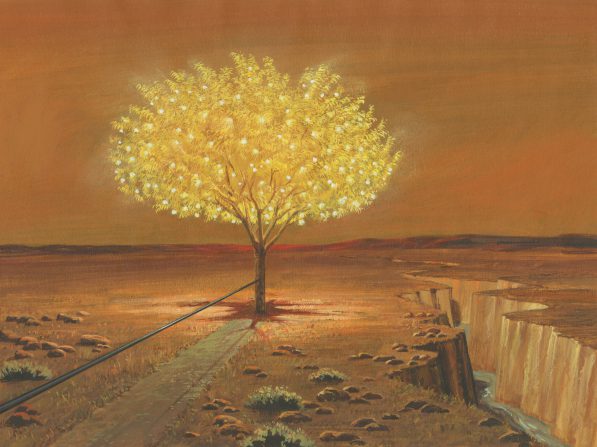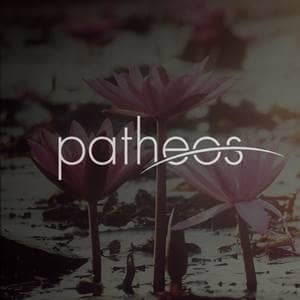
New, today, on the website of the Interpreter Foundation:
Daniel C. Peterson, “All Can Partake, Freely”
Abstract: The Interpreter Foundation welcomes faithful ideas, insights, and manuscripts from people of all backgrounds. In this brief essay, I share some that were recently shared with me regarding Lehi’s vision of the tree of life, as recorded in 1 Nephi 8. Among other things, Lehi seems to have been shown that the divine offer of salvation extends far beyond a small elite. As Peter exclaims in the King James rendering of Acts 10:34, “God is no respecter of persons.” Other translations render the same words as saying that he doesn’t “play favorites” or “show partiality.” The passage in James 1:5 with which the Restoration commenced clearly announces that, if they will simply ask, God “giveth to all men liberally.”
***
A couple of items regarding the forthcoming Witnesses theatrical movie and this next week’s 20th annual Latter-day Saint cinematic event, the LDS Film Festival 2021:
“From the Plates of God to Big Screens of Silver: Witnesses, Summer 2021”
Fox 13 (Salt Lake City): “The LDS Film Festival will be a four-day, in-person event this year celebrating the art of cinema”
***
And, in keeping with my recent practice, here are links to some previous Interpreter articles that you still might find of interest:
Daniel C. Peterson, “Reflections on the Mission of The Interpreter Foundation”
Abstract: Among the covenant obligations taken upon themselves by faithful Latter-day Saints is the consecration of their talents, gifts, and abilities to the building of the Kingdom of God on the earth. Those who established and lead The Interpreter Foundation see their mission in terms of this covenant. The Foundation’s goal is to foster honest and accessible scholarship in service to the Church and Kingdom of God, scholarship that will be of use and benefit to our fellow Latter-day Saints.
Matthew L. Bowen, “Founded Upon a Rock: Doctrinal and Temple Implications of Peter’s Surnaming”
Abstract: The famous Petros/petra wordplay in Matthew 16:18 does not constitute Jesus’s identification of Peter as the “rock” upon which his church would be built. This wordplay does however identify him with that “rock” or “bedrock” inasmuch as Peter, a small “seer-stone,” had the potential to become like the Savior himself, “the Rock of ages.” One aspect of that “rock” is the revelation that comes through faith that Jesus is the Christ. Other aspects of that same rock are the other principles and ordinances of the gospel, including temple ordinances. The temple, a symbol of the Savior and his body, is a symbol of the eternal family—the “sure house” built upon a rock. As such, the temple is the perfect embodiment of Peter’s labor in the priesthood, against which hell will not prevail.
Brant A. Gardner, “Literacy and Orality in the Book of Mormon”
Abstract: The Book of Mormon is a literate product of a literate culture. It references written texts. Nevertheless, behind the obvious literacy, there are clues to a primary orality in Nephite culture. The instances of text creation and most instances of reading texts suggest that documents were written by and for an elite class who were able to read and write. Even among the elite, reading and writing are best seen as a secondary method of communication to be called upon to archive information, to communicate with future readers (who would have been assumed to be elite and therefore able to read), and to communicate when direct oral communication was not possible (letters and the case of Korihor). As we approach the text, we may gain new insights into the art with which it was constructed by examining it as the literate result of a primarily oral culture.
Joseph M. Spencer, “The Time of Sin”
Abstract: This essay provides a close theological reading of Helaman 13, the first part of the sermon of Samuel the Lamanite. Beginning from the insight that the chapter focuses intensely on time, it develops a theological case for how sin has its own temporality. Sin opens up a disastrous future, deliberately misremembers the past, and complicates the constitution of the present as the past of the future.
Abstract: Fundamental changes have occurred in the historical profession over the past thirty years. The central revolutionary change is that workers in the historical profession can no longer ignore theory and philosophy of history. A built-in resistance to theory causes historians to abjure philosophical analysis of their discipline at a time when such analysis is recognized to be indispensable. If one doesn’t have an explicit theory, one will appropriate one uncritically, without the felt need to articulate and defend the theory. The dominant theory in history over the past century has been positivism, a conception of disciplinary work that ruled history and the social sciences during the twentieth century but has been stripped of rhetorical and persuasive power over the past three decades. Although positivism has been overwhelmingly rejected by theoretically informed historians, it continues to dominate among the vast majority of historians, who fear adulterating history with philosophical examination. The most common version of positivism among historians is the assertion that the only evidence from the past that is valid is testimony based on empirical observation. This essay focuses on recent comments by Dan Vogel and Christopher Smith, who deny this dominance of positivism in the historical profession, and in Mormon history in particular, by misunderstanding positivism without even consulting the large scholarly literature on the topic that rebuts their assertions. They make no attempt to engage the sophisticated literature on the transformation in historiography and philosophy of history that has made most of history written [Page 112]to standards of the 1970s obsolete and revealed it as ideologically inspired; while at the same time these historical researchers assert their own objectivity by appealing to a conventional wisdom that is now antiquated. This version of positivism is especially hostile to religious belief in general, and in particular to that embodied in the LDS tradition.
Review of David Bokovoy. Authoring the Old Testament: Genesis–Deuteronomy. Salt Lake City: Greg Kofford Books, 2014). Foreword by John W. Welch. 272pp. Paperback and hardcover. ((I am reviewing an advanced reading copy. Some of the material I review may be updated in the final printed form, with some of my quotations and page numbers of Bokovoy’s book possibly being updated by then.))
Abstract: Bokovoy’s new volume substantiates the claim that faithful Latter-day Saint students of Holy Scripture can apply the knowledge and methods gained through academic studies to the Bible.
Jeffrey M. Bradshaw, “Sorting Out the Sources in Scripture”
Review of David E. Bokovoy, Authoring the Old Testament: Genesis-Deuteronomy. Contemporary Studies in Scripture. Salt Lake City, UT: Greg Kofford Books, 2014. 272 pp. $26.95 (paperback); $70.00 (hardcover).
Abstract: To date, LDS scholars have largely ignored the important but rather complex questions about how primary sources may have been authored and combined to form the Bible as we have it today. David Bokovoy’s book, one of a projected series of volumes on the authorship of the Old Testament, is intended to rectify this deficiency, bringing the results of scholarship in Higher Criticism into greater visibility within the LDS community. Though readers may not agree in every respect with the book’s analysis and results, particularly with its characterization of the Books of Moses and Abraham as “inspired pseudepigrapha,” Bokovoy has rendered an important service by applying his considerable expertise in a sincere quest to understand how those who accept Joseph Smith as a prophet of God can derive valuable interpretive lessons from modern scholarship.















